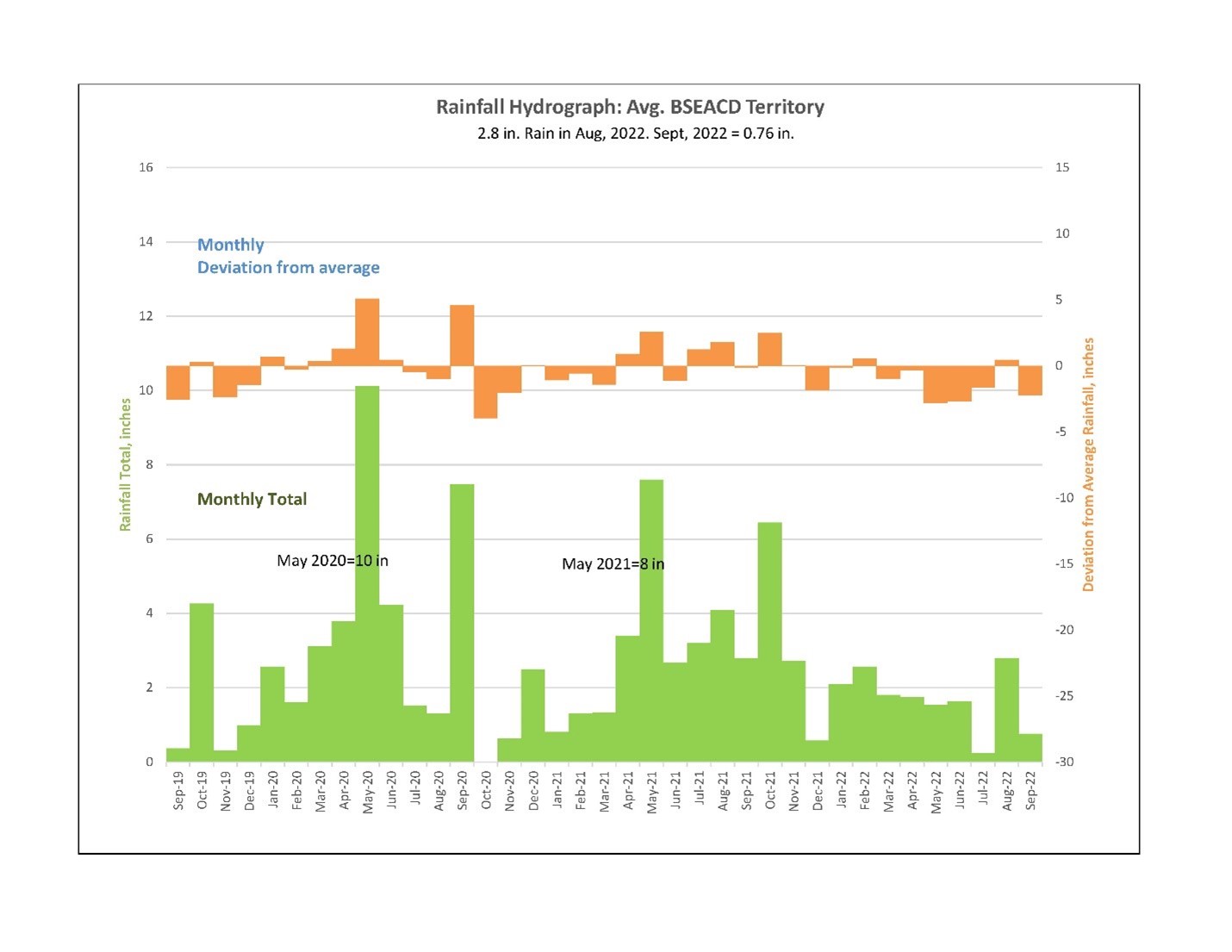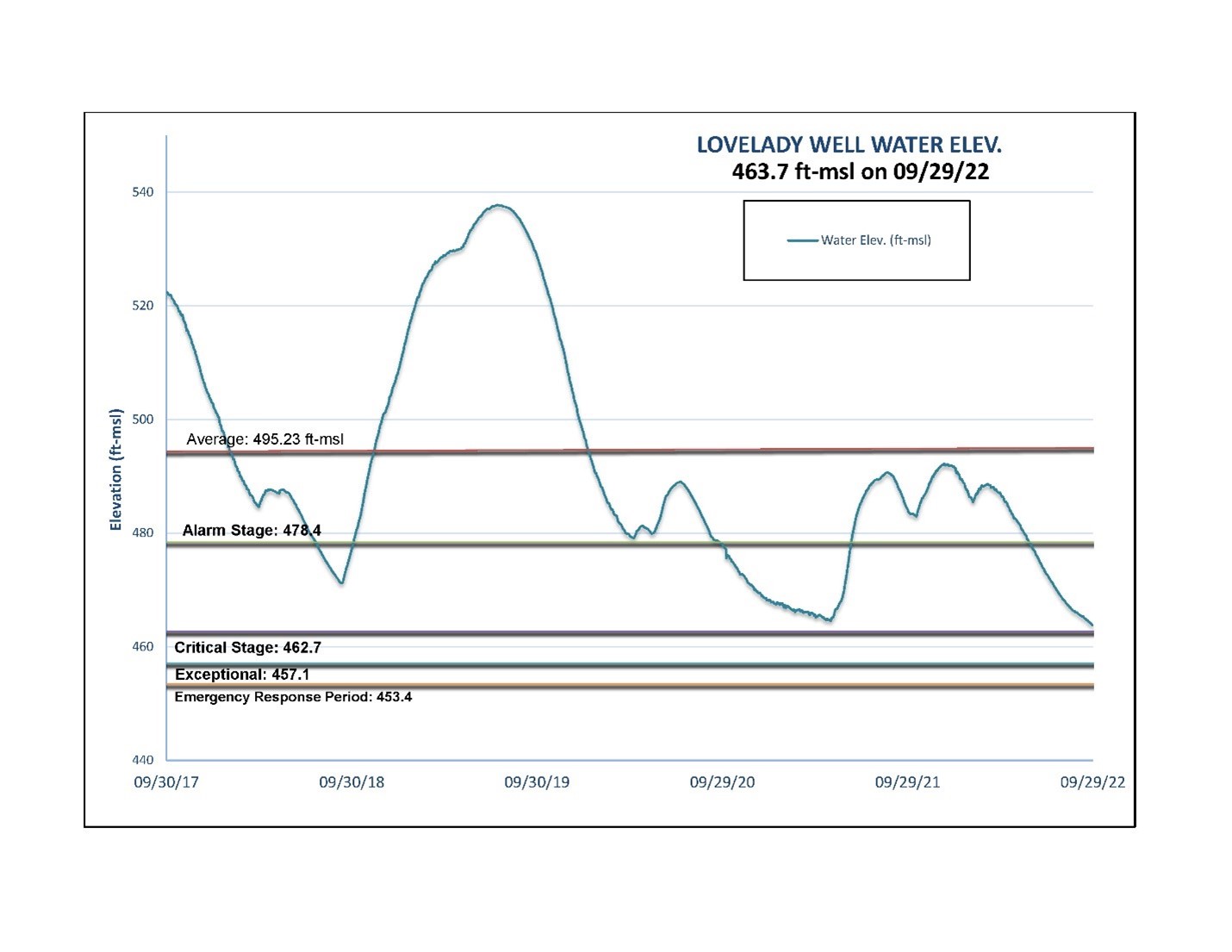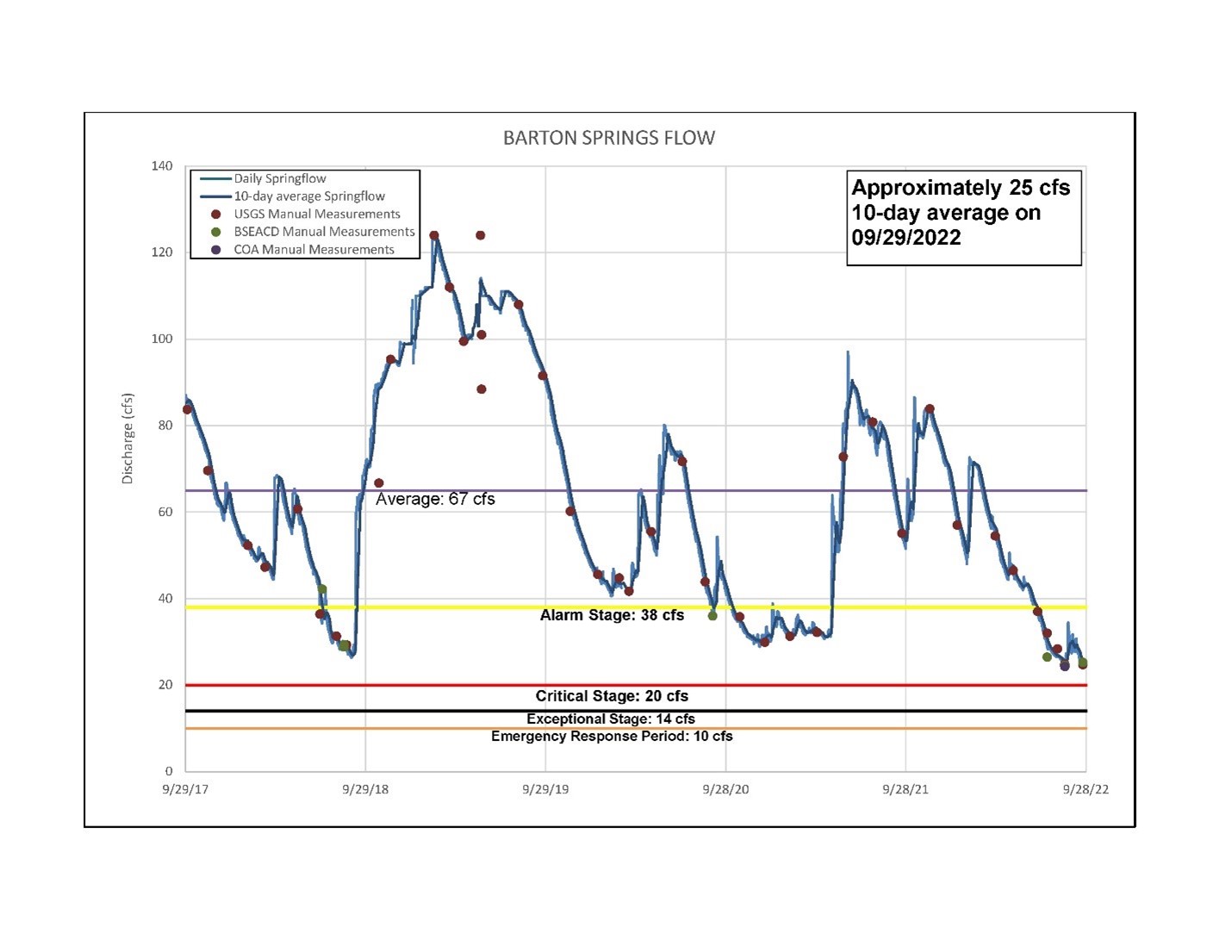
Aquifer District Declares Critical Drought (Stage III)
For Immediate Release: October 20, 2022
For more information, contact: David Marino, Communications & Outreach Manager at (512) 282-8441 or dmarino@bseacd.org
On October 20, 2022, Barton Springs/Edwards Aquifer Conservation District General Manager Tim Loftus, declared Critical Drought (Stage III). One of the District’s drought triggers, Lovelady Monitor Well, passed below its Critical Drought trigger on October 17, 2022. Only one of the District’s two drought stage triggers (Lovelady Monitor Well & Barton Springs) needs to be reached for a drought declaration to be made. However, to exit a drought stage, both Barton Springs and Lovelady must rise above their respective drought trigger values. This latter requirement keeps the District from making multiple declarations about drought over short periods of time.
The District hasn’t been in Critical Drought (Stage III) since October of 2013. While drought conditions have improved across the state, central Texas still isn’t seeing much rain. So far, we have received below average rainfall every month this year except for February and August. May, June, and July of 2022 were the warmest on record for Austin. Reducing water use is now critical. With continued lack of rainfall and high rates of pumping, water levels could drop to the extent that some wells go dry. The District has already received reports of dry wells. Flow from Barton Springs could eventually decrease to the point where ecological, recreational, and aesthetic uses of Barton Springs would be damaged.
Declaration of Critical Drought (Stage III) requires all District permittees to implement mandatory measures specified in their User Drought Contingency Plans (UDCPs) to meet monthly pumpage reduction requirements:
- 30% for Edwards Historical and Conditional Class A permittees,
- 75% for Edwards Conditional Class B permittees,
- 100% for Edwards Conditional Class C and Class D permittees, and
- 30% for Trinity and Alluvial/Austin Chalk Historical permittees
“We can’t afford to underestimate the threat that the current drought poses and the need for everyone to do their part to conserve water,” said General Manager Tim Loftus.
End-user customers (60,000+ existing groundwater users in the District) served by water utilities on groundwater wells are required to comply with their utility’s water use restrictions for this drought stage. Generally, outdoor irrigation of lawns and landscaping is now prohibited or severely restricted. Groundwater uses should be limited for essential indoor demands needed to preserve health and safety with a very minor allocation provided for non-essential outdoor water use.
November is the first month that permittees will need to meet new reductions in pumpage. Permittees should refer to the monthly drought allocations listed in their User Drought Conservation Plan (UDCP) and Drought Target Charts.
Planting native or drought-tolerant landscapes, mulching, and using compost can substantially reduce the amount of irrigation water required to keep plants healthy. Making sure your irrigation system is functioning at peak efficiency and replacing leaking gaskets and hoses can help conserve water. Installing a rain barrel or rainwater harvesting system can make an even bigger impact in reducing overall water use.
The District recommends that both exempt and permitted well owners follow these conservation tips. For additional information on groundwater wells, please take a look at the District’s Well Owner Guide. If you have questions about your well, please contact us at 512-282-8441. We encourage you to call or visit our office (1124 Regal Row, Austin, TX) during office hours (8 a.m. to 5 p.m.) to review our groundwater management process, receive information about the drought, or if you need assistance with other groundwater related matters.
Useful links:
Drought Information
Frequently Asked Drought Questions
Drought Media Tool-Kit
Drought Status page
Drought Management page




